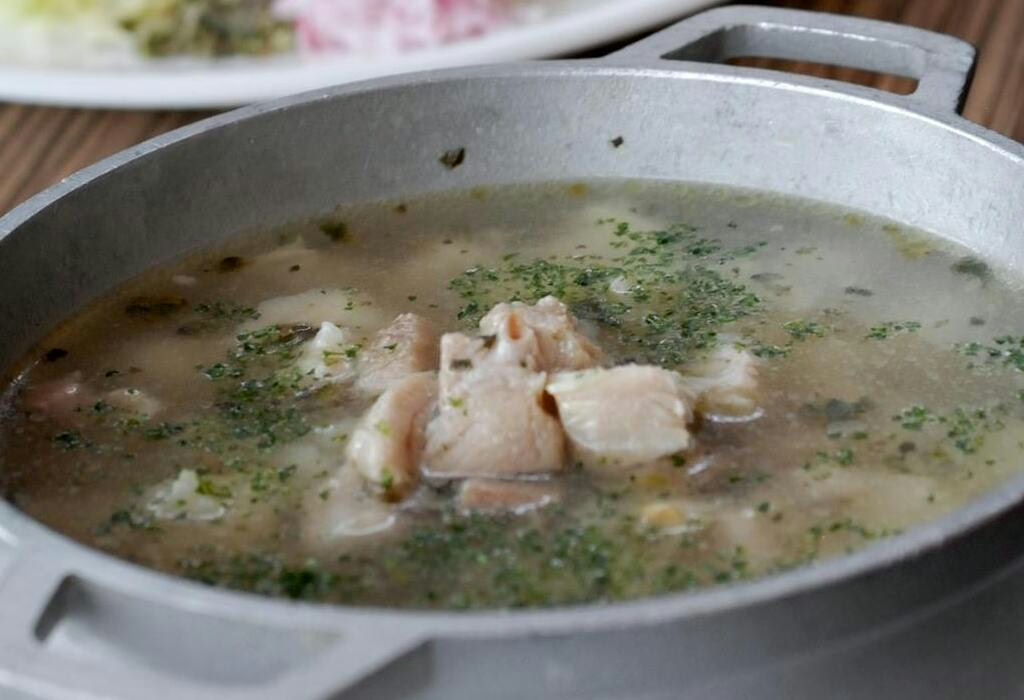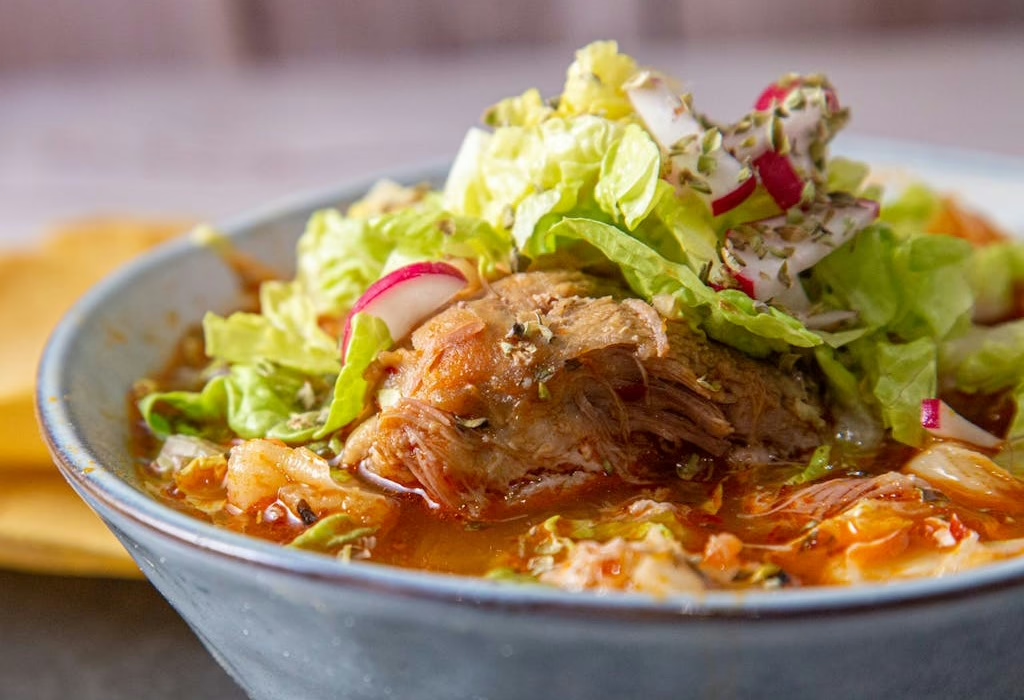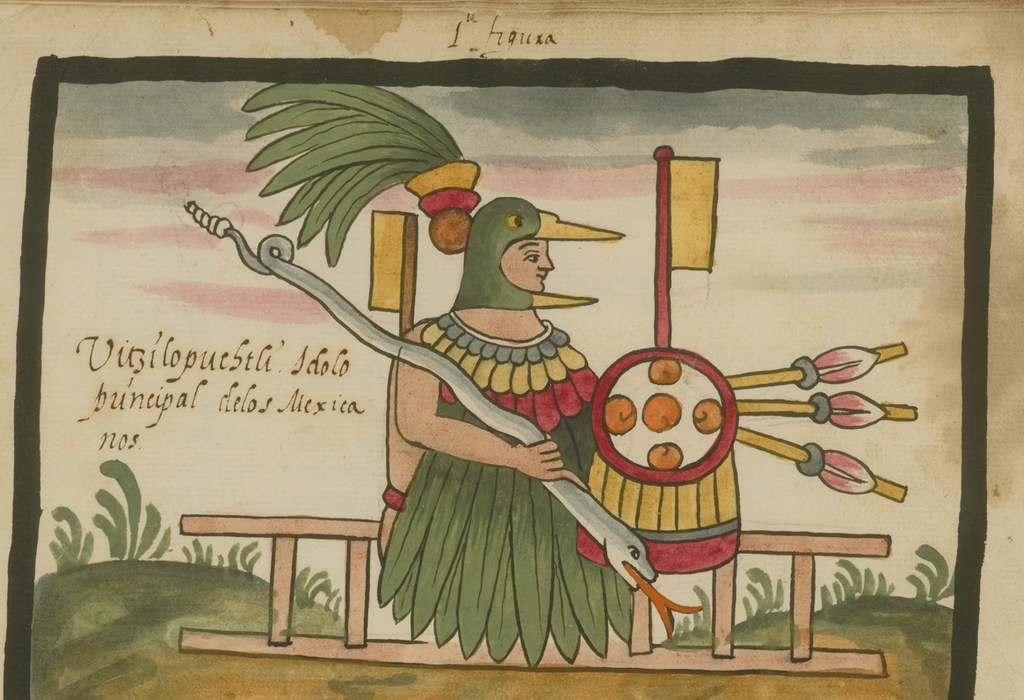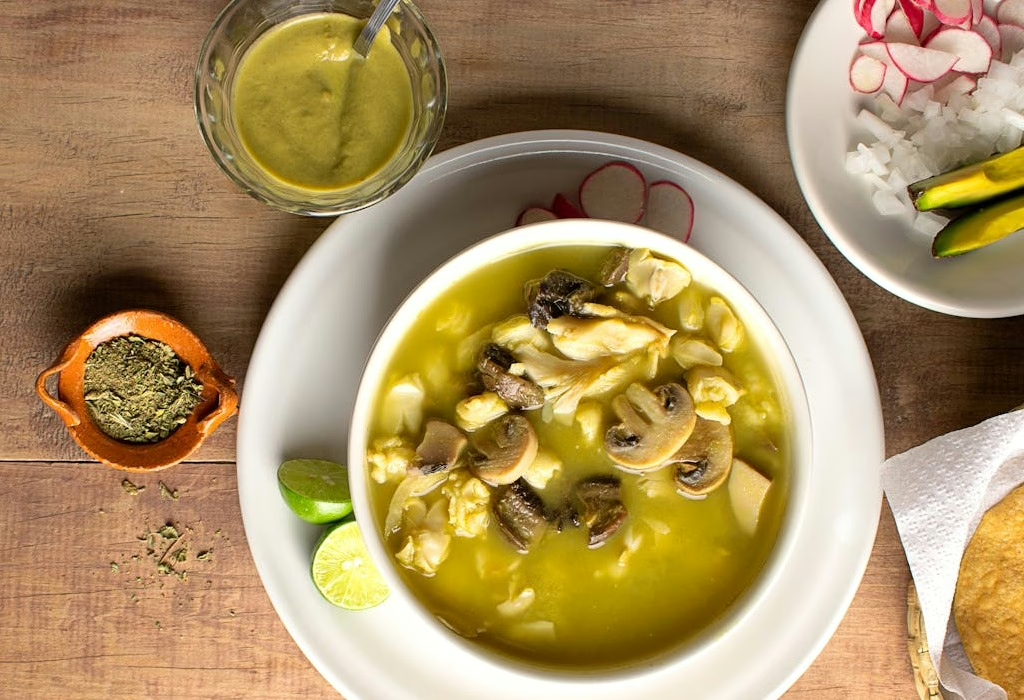Table of Contents:
- Introduction
- What is pozole?
- What is the pozole history?
- What is it made of?
- In which places in Mexico can you eat the best pozole?
- Conclusion
- Informative video
Introduction
Pozole is more than a dish. It is a story in a warm bowl. When a big pot begins to bubble, people gather, talk, and smile. The smell is friendly, and the first spoon tastes like home. In many Mexican houses, a day with pozole feels special but also simple. It is the kind of food that asks you to sit, slow down, and share. For travelers and locals, it can be a first step into everyday Mexican life filled with care and welcome.
This article invites you to look closely at that bowl and ask a few gentle questions. Why do so many people feel comfort the moment they see it on the table? How did a humble stew become a sign of togetherness for families, neighbors, and friends? What small traditions do people follow when they cook it, serve it, and enjoy it? You will read about meaning, memory, and community, and you will see how a simple meal can hold ideas about the world and our place in it.

Pozole also invites choice.
People often add their own touch when the bowl reaches them. Some like freshness and crunch. Others want more warmth and depth. Some prefer mild flavors, and others look for a little fire. Every person builds a bowl that feels right for them. In this way, the meal is personal and shared at the same time.
As you read, keep two ideas in mind. First, food can carry history without speaking. A recipe can move across years because people love it and keep it alive. Second, food can teach us how a community lives. It can show how people meet, celebrate, and care for each other. Pozole is a clear example. It is a dish you eat, a memory you keep, and a bridge you cross between past and present. This introduction is your quiet first taste. The next pages will bring the rest of the story. Read with curiosity, kindness, and an open heart for learning.

What is pozole?
The pozole history is a must for every foodie and history buff worldwide. Pozole is an excellent example of Mexican culture and tradition. This famous Mexican soup is a meal lesson, much like tacos. Additionally, its deep-rooted flavors, whose origins stretch back centuries, millennia perhaps, showcase a rich tapestry so evocative of its past that it will make you want to try this food every time you visit Mexico.
Digging into pozole history reveals that this traditional Mexican dish is hugely important to the country, especially on September 15 and other important festivities. On this date (September 15), families from all over the country celebrate, and pozole is starred as the main course. There are different types of pozole: red, green, and white—each type marking regional traditions alongside the development of a cuisine.
Traditionally, one of the most vital ingredients nowadays of pozole is pork. Still, you can also eat it with chicken or even vegetarian versions, so it has adapted to the taste of new generations. Still, a pork version of the dish-whether contemporary or classic – remains particularly dear to the hearts (or taste buds) of pozole history devotees.
The significance of pozole on these national holidays reveals how ancient the dish is. It shows a pivotal transformation from pre-Hispanic food to a culinary staple that creates harmony within its flavors and ingredients—much like Mexico itself.

What is the pozole history?
Undoubtedly, we know its smell, taste, and ingredients. But what if we start deep-diving into the pozole origin? Believe us, pozole origin is more impressive than you thought. Pozole was an essential dish during the Mexica era but wasn’t as typical as today’s food. It was a sacred ceremonial dish only for religious festivities, ingested only by the ruler or the highest-ranking priests.
That’s right, eating pozole at that time was like today, like wanting to have dinner at a very expensive and elegant restaurant, and you have to have a reservation or a special invitation. Or when you want to party at a nightclub, but the guard at the entrance does not give you access. That’s how the Mexica people handled pozole consumption. Only VIPs (only very important priests) were worthy of this culinary jewel. It was prepared with cacahuazintle corn.

Moreover,
as a curious fact, the white color of pozole is associated with the West and the old earth goddesses. It can also symbolize the Milky Way, which stands out against the background of the marvelous night sky. Additionally, it’s said that this was the color of the first light of day before the red sun rose for the Mexicas. These types of ancient symbolism are pretty current on Mexican food.
Likewise, during the great feast of Huitzilopochtli, the captives were prepared by ritually bathing them, and during the night, the snake dance was performed to sacrifice the prisoners finally. Their flesh was used in ritual foods like pozole. Hey, don’t stop reading. Are you getting the heebie-jeebies already?
Songs, dances, and sacrifices were vital daily for the Mexica civilization. They were meant to preserve the regular march of the seasons, the return of rains, the germination of food plants, and the resurrection of the sun—in other words, of all life. Corn, the basis of Mesoamerican culture and part of the creation myth, and the ingestion of human flesh from the sacrifice meant the rite where the permanent duality of Mesoamerican people was confirmed. What was it? The origin and end, sky and earth, day and night, life and death.

Likewise,
its consumption was the mythical expression of total rebirth, with a sun extinguishing to which the blood of the sacrificed would give life and light. One must die to be reborn. With this transition of ingredients, this dish was never the same. Especially in terms of its symbolic meaning. Since then, its consumption has been not only for priests and rulers but for everybody! Fortunately, we can enjoy it today in most of the Mexican Republic.
😋Try pozole and other famous Mexican dishes with us here:
- Food Experience in Mexico: Enjoy Grutas, Delicious Pulque, and Mexican Dishes (3 Days)
- Food in Puebla: Taste Irresistible Flavors of Cholula and Atlixco (3 Days)
- CDMX Foodie Adventure: A Delicious Trip in Condesa and Roma Neighborhoods (4h)
- Oaxaca Food Experience: A Truly Feast From Monte Alban to Huatulco Dishes (10 Days)

What is it made of?
As we have mentioned, pozole today has many variations. There are pozole with pork, chicken, vegetarian, and some even add eggs. So it will depend a lot on where you go in Mexico. However, these ingredients are indispensable in its preparation and when it is ready to eat:
- Onion
- Salt
- Garlic
- Radish
- Lemons
- Lettuce
- Pozole corn
- Bay leaves
- Oregano
- Tostadas (these are mainly to accompany pozole)
- Chili (depending on the color or type of pozole, you will choose the type of chili) Check out our spicy food article by clicking here! 🌶️
The ingredients vary depending on the type of pozole you want, but they are usually essential and fundamental to making your pozole spectacular!

In which places in Mexico can you eat the best pozole?
Below, I will share three great places to eat a delicious pozole in Mexico. I hope you like it, but remember that everything is subjective. Mexico is where pozole is eaten in many parts, and its taste and method of preparation depend on the region. Enjoy these destinations!
Guerrero
It is a classic and the most famous type of pozole in Mexico. The delicious and fragrant version of this classic recipe comes from Guerrero on Mexico’s Pacific coast. This white corn, pork-based soup is available anywhere in Mexico. Still, the Guerrero version has a unique green color from all things delicious and green, like tomatillos, pepitas (pumpkin seeds), and various herbs.
Nowadays, pozole guerrerense is not only a local favorite of Guerrero. Yet that has not stopped the food from becoming popular across Mexico – and beyond, where it is praised for its distinct taste and emboldened representation of Mexican gastronomy.
🥣 Visit the beautiful state of Guerrero with us by joining our tours:
- Taxco from Mexico City: Plus Ancient Xochicalco Pyramids (12h)
- Taxco: Walk in Lovely Town and Explore Cacahuamilpa Caves (12h)
- Discover the Eternal Spring City and Charming Taxco Town (Private / 9.5h)

Mexico City
In massive Mexico City, you’ll find pozole on every corner, just as you’ll find tacos everywhere. If we were to mention every place that sells pozole in this city, we would never finish this article. That is why I will only mention one specific place where the pozole experience is really interesting and a once-in-a-lifetime experience for any foodie.
This place is “El Pozole de Moctezuma”.From outside, you will only see a building that may not be seen as a local pozole restaurant. But if you approach and ring the doorbell with ‘pozole’ written on it, they will open the door, and you will enter a house. You will feel at home. About the taste of pozole, I won’t say anything; you have to experience it yourself and fall in love. Do you remember I mentioned that you can add egg to pozole? Well, this is the place where you will try it. Also, you will try fantastic blends, like mezcal with pozole…
Guadalajara
Pozole jalisciense is a version of the classic Mexican dish from Jalisco in western Mexico. It is prepared by blending dried chilies, such as guajillo, ancho, or árbol, and is known for its bright red color. A rich, spicy broth hugs each tender pork and hominy corn, making this an incredibly warm and filling dish.
Pozole jalisciense is served with fresh garnishes, such as shredded lettuce, sliced radishes, diced onion, and lime wedges. Today, pozole jalisciense is a staple dish of Jalisco—part of the region’s identity, which is known for sharing culinary delicacies far and wide across Mexico in traditional parties, ‘fiestas,‘ or celebratory meals with family.
🍴 Visit the beautiful state of Jalisco with us by joining our tours:
- Adventure in Wonderful Magic Town in Tequila, Jalisco (Private / 6h)
- Explore Guachimontones Ruins and Charming Tequila Town in Jalisco (Private / 6h)
- Know the Beautiful Historic Center of Guadalajara (Private / 3h)
- Visit Authentic Distilleries Plus Magic Town in Guadalajara (Private / 6.5h)
- Visit Fantastic Towns and Local Distillery in Guadalajara (Group / 8h)
Honorific Mentions: Pozole de setas in Sinaloa and sea food pozole in Ensenada.

Conclusion
The pozole history reflects Mexican passion for its cuisine. Our worldviews of life sometimes shape our way of believing and behaving; in the case of our Mexican ancestors, they also had an extraordinary way of life based on the daily struggle for survival in wars and pleasing the gods to continue maintaining both spiritual and earthly strength.
This ceremony had a significant meaning, and for several ancient cultures, human sacrifices represented an intense show of loyalty. While the history of pozole may be shocking to many, it shows us how the ancient can be mixed with the present and give fantastic results, such as this type of Mexican food.
So now you know, if you are looking for a dish where you can taste firsthand the history, culture, folklore, and tradition of Mexico, pozole is the Mexican food you must try. The pozole history is a way to travel through time and experience all the most delicious flavors of the fabulous and always exquisite traditional Mexican food.
